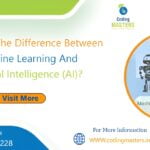What Are Some Popular Machine Learning Techniques Used In Ai Develepment?

Exploring Popular Machine Learning Techniques in AI Development:
Machine learning (ML) Techniques in AI Development are at the core of artificial intelligence (AI) development, powering algorithms that enable systems to learn from data and make predictions or decisions. Here are some of the most popular ML techniques used in AI development:
1. Supervised Learning: This technique involves training a model on labeled data, where the algorithm learns to map inputs to outputs based on example input-output pairs. Common algorithms include linear regression, decision trees, and support vector machines.
2. Unsupervised Learning: In contrast to supervised learning, unsupervised learning works with unlabeled data to find hidden patterns or structures. Clustering algorithms like K-means clustering and hierarchical clustering fall under this category.
3. Semi-Supervised Learning: This technique combines elements of supervised and unsupervised learning, leveraging a small amount of labeled data along with a larger set of unlabeled data. It’s useful when obtaining labeled data is costly or time-consuming.
4. Reinforcement Learning: In reinforcement learning, an agent learns to make decisions by interacting with an environment and receiving feedback in the form of rewards or penalties. Popular algorithms include Q-learning and deep Q-networks (DQN).
5. Deep Learning: Deep learning involves training deep neural networks with multiple layers to learn complex representations of data. Convolutional Neural Networks (CNNs) are widely used for image recognition tasks, while Recurrent Neural Networks (RNNs) excel in sequential data analysis.
6. Transfer Learning: This technique involves using pre-trained models as a starting point for new tasks, reducing the need for large amounts of data and computational resources. It’s particularly useful in domains where labeled data is scarce.
7. Ensemble Learning: Ensemble methods combine multiple models to improve prediction accuracy and robustness. Examples include Random Forests, Gradient Boosting Machines (GBM), and AdaBoost.
Also, Follow us on Linkedin



